Thingiverse
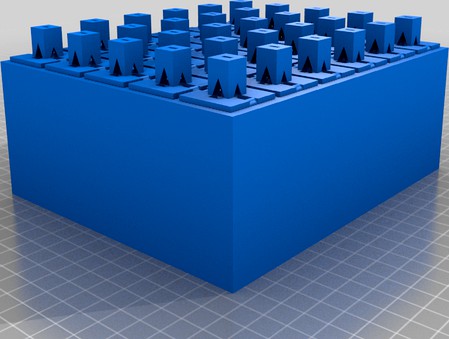
Raft Stacking any object for printing many items at once (OpenSCAD code) by anberman
by Thingiverse
Last crawled date: 4 years, 1 month ago
A SCAD script to stack a given 3D file vertically quickly, and optionally provide rafts at each vertical layer to help support printing files that are not top-bottom flat and symmetrical.Github Link
RaftStacking
A SCAD script to stack a given 3D file vertically quickly, and optionally provide rafts at each vertical layer to help support printing files that are not top-bottom flat and symmetrical. This was created to print many more items per printing session, so that multi-day prints of many items can be made without constanly resetting the printer. I've used this script to make many 3D printed STEM kits that go to over 11 elementary school science classrooms for TITIL and the Making the Maker project at Texas A&M University
Given any 3D file, you need to record it's X,Y,Z dimensions in CAD or a slicer and find its offset from the origin. From there, this script can generate a full buildplate based on your printer volume (MANUAL_GRID = true;), or a specified number of copies in a x,y,z grid. There are effectively 3 methods of printing I have explored with this script:
(1) Printing with Layer-Rafts: the script can generate one huge STL file that has both the stacks and a supporting raft, held up by a grid of optional walls surrounding each print. You will need to save supports to your design ahead of time if they are needed. dupontFemaleWireHolders4LEDs_Manufacture_5Layers.stl is an example file of this setting, where each item is a small holder for two female dupont jumper wires to fit snugly on the inside to host an LED on top, with wires outside and back in to keep everything robust and in-place. (SEPARATE_FILES = false;)
(2) Printing by stacking or using slicer-supports: the script can generate the STL file without any rafts, letting the slicer build support. I've found Cura's tree support breaks apart fairly easily. In this mode you will not need to pre-save supports (SEPARATE_FILES = true; EXPORT_SUPPORT = false;)
(3) Printing with multi-materials: this is the most difficult option to print, but if tuned, may speed up actual production considerably. The script can export two seperate STL files for the copied design and the raft-supports. You may do multi-material prints, printing the support in a soluable material (e.g. PVA, HIPS) or a FDM support-specific material (e.g breakaway material). The design material will not adhese well to rafts unless printing temperatures are similar between the materials and unless the build area is enclosed. Once printed, the supports can be removed more easily with this method, requiring less human hours to seperate these prints
RaftStacking
A SCAD script to stack a given 3D file vertically quickly, and optionally provide rafts at each vertical layer to help support printing files that are not top-bottom flat and symmetrical. This was created to print many more items per printing session, so that multi-day prints of many items can be made without constanly resetting the printer. I've used this script to make many 3D printed STEM kits that go to over 11 elementary school science classrooms for TITIL and the Making the Maker project at Texas A&M University
Given any 3D file, you need to record it's X,Y,Z dimensions in CAD or a slicer and find its offset from the origin. From there, this script can generate a full buildplate based on your printer volume (MANUAL_GRID = true;), or a specified number of copies in a x,y,z grid. There are effectively 3 methods of printing I have explored with this script:
(1) Printing with Layer-Rafts: the script can generate one huge STL file that has both the stacks and a supporting raft, held up by a grid of optional walls surrounding each print. You will need to save supports to your design ahead of time if they are needed. dupontFemaleWireHolders4LEDs_Manufacture_5Layers.stl is an example file of this setting, where each item is a small holder for two female dupont jumper wires to fit snugly on the inside to host an LED on top, with wires outside and back in to keep everything robust and in-place. (SEPARATE_FILES = false;)
(2) Printing by stacking or using slicer-supports: the script can generate the STL file without any rafts, letting the slicer build support. I've found Cura's tree support breaks apart fairly easily. In this mode you will not need to pre-save supports (SEPARATE_FILES = true; EXPORT_SUPPORT = false;)
(3) Printing with multi-materials: this is the most difficult option to print, but if tuned, may speed up actual production considerably. The script can export two seperate STL files for the copied design and the raft-supports. You may do multi-material prints, printing the support in a soluable material (e.g. PVA, HIPS) or a FDM support-specific material (e.g breakaway material). The design material will not adhese well to rafts unless printing temperatures are similar between the materials and unless the build area is enclosed. Once printed, the supports can be removed more easily with this method, requiring less human hours to seperate these prints
Similar models
thingiverse
free

1. FCN IPhone XR Case Multi Color by Jotham
...u not required.
stl file scaled in slicer to 10%
i printed petg (das filament)
each layer 0.2mm
0.4mm nozzle
~6.7m filament used
thingiverse
free

Homestuck Sburb frame by paulsim0n
...b frame by paulsim0n
thingiverse
you can customise this thing a bit using parameters in scad file.
print it with one-layer raft.
thingiverse
free

Hygrometer holder SCAD - customizable by WT1704
... version has some more options:
viewhygrometer (shows and hygrometer)
textheight
wallwidth ( a 0 value will not generate a wall )
cg_trader
$3

WOWSTICK SCREWDRIVER 1F ALL IN ONE CASE 3D PRINTABLE | 3D
...river 1f all in one case 3d printable | 3d
cg trader
print each object seperately. no need to support. use raft against wraps.
thingiverse
free

Cylindrical Functions Script by mrule
.... if a .scad filename is given as the command line argument, an openscad script will be written and meshlab will not be launched.
thingiverse
free

Modular Stackable Cassette Rack by ionsight
...tack cannot slide backward and no glue is needed. support material is needed while on the original model supports are not needed.
thingiverse
free

Customizable Rippled Organic Vase by anoved
... cache size in openscad preferences if you want to significantly increase resolution.)
part of my customizable containers series.
thingiverse
free

Quick Remix: Pin without raft for owl by lytta
...by lytta
thingiverse
pin for the owl with the raft removed so you can print without raft or with your own slicer-generated raft.
cg_trader
$3

Dugaci Sculpture | 3D
...-by-vertex vrml file and an stl without color. the vrml does not have a texture map or unwrapping, just a color on each vertex.
thingiverse
free

Aluminum can opener (fingernail saver) by TimeFramed
...es the support needed for the "finger"; i found that the slicer-generated support was not adequate to get a good print.
Anberman
thingiverse
free

Cube by anberman
...cube by anberman
thingiverse
rounded cube
thingiverse
free

Button by anberman
...button by anberman
thingiverse
this is a 3d-designed button!
thingiverse
free

Reveille 3D by anberman
...reveille 3d by anberman
thingiverse
3d scan of reveille figurine, cleaned up and decorated
thingiverse
free

Dual Extruder Color Reveille by anberman
...ruder color reveille by anberman
thingiverse
printed with a ultimaker 3
texas a&m's own general reveille in two colors.
Raft
3d_ocean
$19
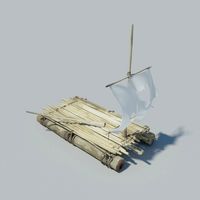
Raft
...raft
3docean
3d raft raft
raft made in 3ds max 2014, has 54223 poligons, vray.
turbosquid
$39
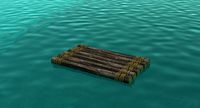
Raft
... available on turbo squid, the world's leading provider of digital 3d models for visualization, films, television, and games.
turbosquid
$35

Raft
... available on turbo squid, the world's leading provider of digital 3d models for visualization, films, television, and games.
turbosquid
$29

raft
...ree 3d model raft for download as 3ds, obj, c4d, fbx, and stl on turbosquid: 3d models for games, architecture, videos. (1508851)
turbosquid
$1

Raft
... available on turbo squid, the world's leading provider of digital 3d models for visualization, films, television, and games.
turbosquid
$1
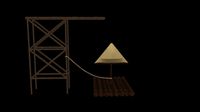
raft
... available on turbo squid, the world's leading provider of digital 3d models for visualization, films, television, and games.
turbosquid
free

raft
... available on turbo squid, the world's leading provider of digital 3d models for visualization, films, television, and games.
design_connected
$16

Body Raft
...body raft
designconnected
cappellini body raft computer generated 3d model. designed by trubridge, david.
design_connected
$16
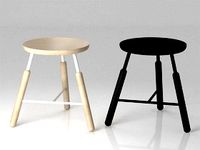
Raft Stool
...raft stool
designconnected
&tradition raft stool computer generated 3d model. designed by rønn, kasper.
design_connected
$13

Raft Table
...raft table
designconnected
&tradition raft table computer generated 3d model. designed by rønn, kasper.
Openscad
thingiverse
free
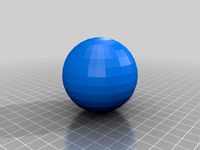
OpenSCAD sphere
...openscad sphere
thingiverse
basic project for openscad.
thingiverse
free
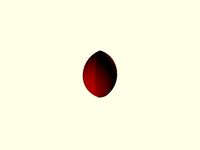
Openscad Football by KySyth
...openscad football by kysyth
thingiverse
openscad not tested
thingiverse
free

Openscad Apple by KySyth
...openscad apple by kysyth
thingiverse
openscad apple = not tested
thingiverse
free

Plugs with openscad by benengel
...plugs with openscad by benengel
thingiverse
plugs with openscad and fontawesome
thingiverse
free
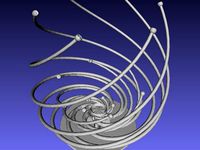
Openscad spirals by mafmuf
...openscad spirals by mafmuf
thingiverse
just fooling around with openscad.
thingiverse
free

Practice on OpenScad by ajensen906
...practice on openscad by ajensen906
thingiverse
a very crude practice on openscad
thingiverse
free
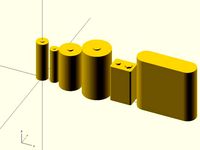
Batteries in OpenSCAD by roman_hegglin
...batteries in openscad by roman_hegglin
thingiverse
common batteries as modules for openscad.
thingiverse
free

OpenScad Propeller by KySyth
...se
trying to make a propeller with openscad = not tested
this is some of the results
added the openscad file but still need work
thingiverse
free
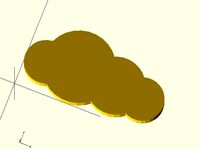
Openscad Cloud by Twanne
...openscad cloud by twanne
thingiverse
openscad cloud.
size can be adjusted
thingiverse
free

Geomag for OpenScad by vicnet
...geomag for openscad by vicnet
thingiverse
openscad file to design geomag things.
Code
turbosquid
$1

Code
...code
turbosquid
royalty free 3d model code for download as on turbosquid: 3d models for games, architecture, videos. (1293119)
3ddd
$1

банкетка code
...e , банкетка , капитоне
производитель
3d_export
$5

Code lock
...code lock
3dexport
realistic hight-poly model of code lock with high quality pbr textures (4096x4096). rendering in v-ray.
3d_export
$5
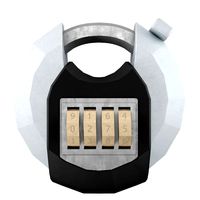
Code lock
...code lock
3dexport
realistic hight-poly model of code lock with high quality pbr textures (4096x4096). rendering in v-ray.
turbosquid
$10
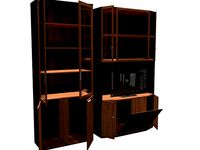
Code Lock
...
royalty free 3d model code lock for download as max and fbx on turbosquid: 3d models for games, architecture, videos. (1368816)
turbosquid
$30

Code: MRN
... available on turbo squid, the world's leading provider of digital 3d models for visualization, films, television, and games.
3ddd
$1

DV home / CODE
...dv home / code
3ddd
dv home
итальянская фабрика dv home / стул code
3ddd
free
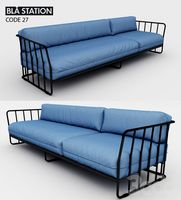
Blastation, Code 27
...ddd
blastation , code 27
диван фабрики blastation. размер 2700х950 h1100. 135 883 polys.
turbosquid
$10

Code Sofa, ENNE
...id
royalty free 3d model code sofa, enne for download as max on turbosquid: 3d models for games, architecture, videos. (1192986)
turbosquid
free

Armani Sport Code
...e 3d model armani sport code for download as ma, obj, and fbx on turbosquid: 3d models for games, architecture, videos. (1204039)
Stacking
3d_ocean
$12

Box Stacks
...n
barrel box box stack shards
this is model of box stack with texture that equipped with its shards around the box to add detail.
3ddd
$1

Triptych Stacks
...sa
triptych stacks
современный светильникhttp://curiousaandcuriousa.co.uk/index.php/home/chandeliers1/hayward-gallery1
3ddd
$1
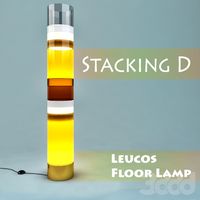
Stacking D
...stacking d
3ddd
leucos
stacking
manufacturer leucos
designer rockwell group
3d_ocean
$5

Stack of Dollars
... realistic stack
ready to render! textured photorealistic dollars are animated. stack of dollars are falling down over and over…
3d_export
$5

dollar stack
...dollar stack
3dexport
turbosquid
$16

Stack of Wood
...quid
royalty free 3d model stack of wood for download as max on turbosquid: 3d models for games, architecture, videos. (1360320)
3d_ocean
$5

Money Stacks
... formats: c4d (textured) – obj (untextured) texture type: standard engine materials poly count per stack: 120 important: this ...
turbosquid
$5

stack machine
...lty free 3d model stack machine for download as ige and sldas on turbosquid: 3d models for games, architecture, videos. (1226834)
turbosquid
$19

Stack of Barrels
...3d model stack of barrels for download as blend, fbx, and obj on turbosquid: 3d models for games, architecture, videos. (1472525)
turbosquid
$6

Brick Stack
...y free 3d model brick stack for download as 3ds, max, and obj on turbosquid: 3d models for games, architecture, videos. (1239828)
Once
3ddd
$1
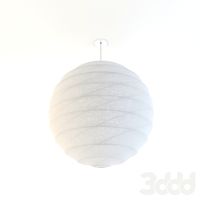
FLOS Once
...flos once
3ddd
flos , once
светильник flos once
3ddd
$1

Tonincasa / Once
...tonincasa / once
3ddd
tonincasa
подставка под тв, от фабрики tonincasa, модель once. размеры соблюдены.
design_connected
$16

Once Upon Rug
...once upon rug
designconnected
nani marquina once upon rug computer generated 3d model. designed by norguet, patrick.
turbosquid
$2000

Once Upon a Time In Shaolin
...free 3d model once upon a time in shaolin for download as c4d on turbosquid: 3d models for games, architecture, videos. (1202560)
3d_export
$15

interco bogger tire
...interco bogger tire 3dexport my second upload please enjoy once ...
3d_export
$5

Can
...can 3dexport 3d modeling of a beverage can. lies once in an obj. file and a stl....
3d_export
$6

knife
...knife 3dexport we highly recommend you to once experience the good performance, quality and beautility of their...
3d_export
$5
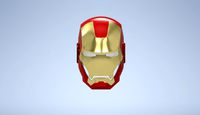
ironman helmet
...mark 3 helmet for anyone who want to print once ...
3d_export
$5

Your Logo
...3dexport i make logos for companies, and 3d services, once purchased by the platform i design your...
3d_export
$10

fantasy sword
...fantasy sword 3dexport once this sword belonged to a great king, what is...
Items
turbosquid
$3

items
... available on turbo squid, the world's leading provider of digital 3d models for visualization, films, television, and games.
3d_export
$10

decorative items
...decorative items
3dexport
name: decorative items
3ddd
free

New Items
...ew items
3ddd
new items , барный
барный стул от китайского производителя фирмы new items
3ddd
$1
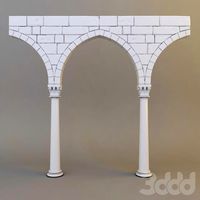
Dec-Item
...dec-item
3ddd
арка , колонна
dec-item
3d_export
$10

cartoon - items
...cartoon - items
3dexport
cartoon - items<br>cartoon objects dae fbx cg lowpoly collection pack 3d 3dmodel object items
3ddd
$1

KOU ITEM
...kou item
3ddd
kou
одна из люстр ручной работы kou item
turbosquid
$4
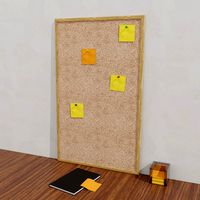
Office Items
...rbosquid
royalty free 3d model office items for download as on turbosquid: 3d models for games, architecture, videos. (1646258)
turbosquid
free

Halloween Items
...
turbosquid
free 3d model halloween items for download as ma on turbosquid: 3d models for games, architecture, videos. (1216704)
turbosquid
$28

Decorative Item
...id
royalty free 3d model decorative item for download as max on turbosquid: 3d models for games, architecture, videos. (1494064)
turbosquid
free

kitchen items
...quid
royalty free 3d model kitchen items for download as fbx on turbosquid: 3d models for games, architecture, videos. (1365367)
Many
turbosquid
$39

Many Kitchenware
...ty free 3d model many kitchen kitchenware for download as max on turbosquid: 3d models for games, architecture, videos. (1237891)
turbosquid
free
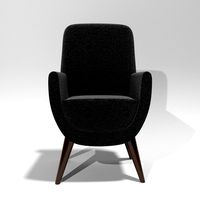
Chair Manie
... available on turbo squid, the world's leading provider of digital 3d models for visualization, films, television, and games.
design_connected
$9

Mani Wall Lamp
...mani wall lamp
designconnected
ligne roset mani wall lamp computer generated 3d model. designed by numéro111.
design_connected
$9
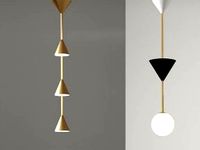
Many Pendant Lamp
...y pendant lamp
designconnected
atelier areti many pendant lamp computer generated 3d model. designed by kerschbaumer, gwendolyn.
3d_export
$15
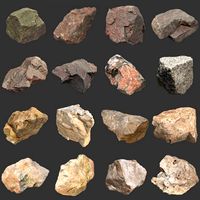
Many ordinary stones
...many ordinary stones
3dexport
stones
turbosquid
$4
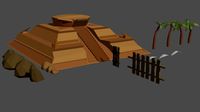
Desert with many objets
...model desert with many objets for download as blend and blend on turbosquid: 3d models for games, architecture, videos. (1682740)
turbosquid
$14
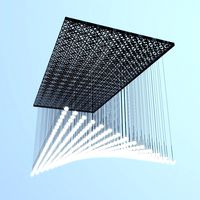
Lamp with many lightbulbs
...l lamp with many lightbulbs for download as max, obj, and fbx on turbosquid: 3d models for games, architecture, videos. (1369910)
turbosquid
$7
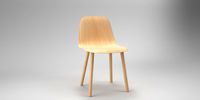
Arrmet Mani Wood
...3d model arrmet mani wood for download as obj, fbx, and blend on turbosquid: 3d models for games, architecture, videos. (1218950)
turbosquid
$3

DNA - Many Types
...ree 3d model dna - many types for download as ma, ma, and fbx on turbosquid: 3d models for games, architecture, videos. (1659457)
turbosquid
$5
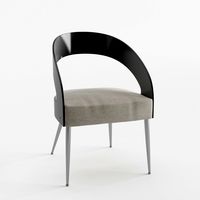
Kellex Mani Armchair
...ani armchair for download as max, max, 3ds, dwg, fbx, and obj on turbosquid: 3d models for games, architecture, videos. (1655268)
Object
3d_export
$40

cartoon - objects
...cartoon - objects
3dexport
cartoon - objects<br>cartoon objects dae fbx cg lowpoly collection pack 3d 3dmodel object
3ddd
free

decorative objects
...decorative objects
3ddd
decorative objects can be used for corners
3ddd
$1

Interior Objects
...interior objects
3ddd
interior objects,i make most of the design. voila..!
3ddd
$1
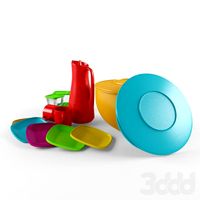
Plastic Objects
...ner , пластик
plastic, objects, kitchen, jar, dish, cup, bowl, pitcher, plate, container
turbosquid
$5

WC object
...rbosquid
royalty free 3d model wc object for download as c4d on turbosquid: 3d models for games, architecture, videos. (1554177)
turbosquid
$2
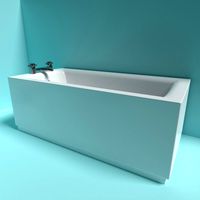
Bathroom objects
...
royalty free 3d model bathroom objects for download as blend on turbosquid: 3d models for games, architecture, videos. (1224432)
3d_export
$20

table with objects
...table with objects
3dexport
turbosquid
$10
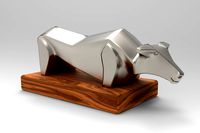
Bull Object
...y free 3d model bull object for download as max, fbx, and obj on turbosquid: 3d models for games, architecture, videos. (1699706)
turbosquid
$5

Ritual Objects
...free 3d model ritual objects for download as ma, fbx, and obj on turbosquid: 3d models for games, architecture, videos. (1611233)
archive3d
free

Objective 3D Model
...-glass objective lens
objective n120508 - 3d model (*.gsm+*.3ds) for interior 3d visualization.
Any
3ddd
$1

Calligaris / ANY
...calligaris / any
3ddd
calligaris
http://www.calligaris.biz/catalogue/dining/chairs/any/cs-1090
turbosquid
$4
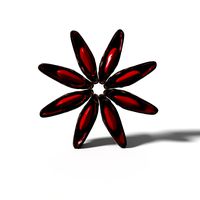
Anis and powder
... model anis and powder for download as lwo, fbx, stl, and obj on turbosquid: 3d models for games, architecture, videos. (1626302)
turbosquid
$15
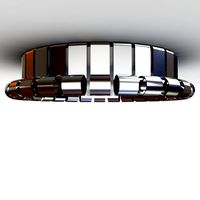
Any lamp
... available on turbo squid, the world's leading provider of digital 3d models for visualization, films, television, and games.
turbosquid
$10
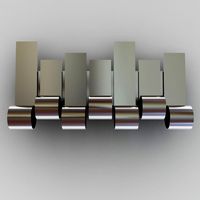
Any sconce
... available on turbo squid, the world's leading provider of digital 3d models for visualization, films, television, and games.
3ddd
$1
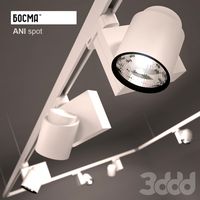
Ani spot
... прожектор
http://bosma.ru/catalogue/product/12
экспозиционный прожектор на шинопроводе
turbosquid
$100

Chibi Anies Bas
...ee 3d model chibi anies bas for download as 3ds, obj, and c4d on turbosquid: 3d models for games, architecture, videos. (1447000)
turbosquid
$29

Cake - for any party
... available on turbo squid, the world's leading provider of digital 3d models for visualization, films, television, and games.
turbosquid
$25
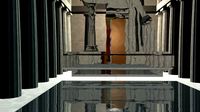
parthanon ani 3_recover
... available on turbo squid, the world's leading provider of digital 3d models for visualization, films, television, and games.
turbosquid
$19

Calligaris Chair ANY
... available on turbo squid, the world's leading provider of digital 3d models for visualization, films, television, and games.
3ddd
free

Коллекция светильников ANI (BOSMA)
...(трековый прожектор)
ani mini spot (трековый прожектор)
файлы .ies к светильникам
трековая система босмаhttp://bosma.ru
Printing
design_connected
$27
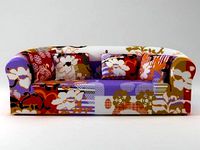
...print
designconnected
moroso print computer generated 3d model. designed by wanders, marcel.
3ddd
free

Eichholtz Prints
...- eichholtz print central station i
13 - eichholtz print central station ii
14 - eichholtz print marisa
15 - eichholtz print tish
3ddd
$1

Eichholtz Prints
...print abstract - set of 2
10 - eichholtz print orange abstract
11 - eichholtz print buddha right
12 - eichholtz print buddha left
turbosquid
$1

... available on turbo squid, the world's leading provider of digital 3d models for visualization, films, television, and games.
3ddd
free
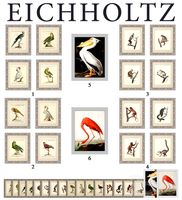
Eichholtz Prints
...of 4
2 - print dunbar 2 set of 4
3 - print guadeloupe 1 set of 4
4 - print guadeloupe 2 set of 4
5 - print giles
6 - print trett
3ddd
$1

Eichholtz Prints
...nt tutti frutti
3 - eichholtz prints watson - set of 2
4 - eichholtz prints antique nautilus - set of 2
5 - eichholtz print tiara
3d_export
$5
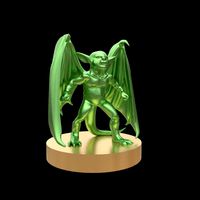
Monster for printing
...monster for printing
3dexport
monster 3d model printing
3ddd
free
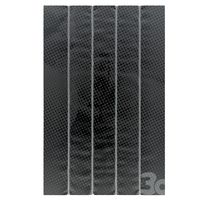
printed rug
...printed rug
3ddd
ковер
very creative printed rug
3ddd
free
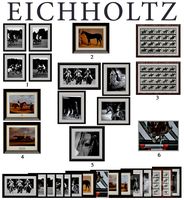
Eichholtz Prints
...иал: бумага
габариты (вхш): 72 x 62 см
описание: print sweetmeat - постер в деревянной раме.
3 - prints varsity set of 2
арти
3ddd
free

Art Print Posters
...art print posters
3ddd
прованс
art print posters by patrician prints
